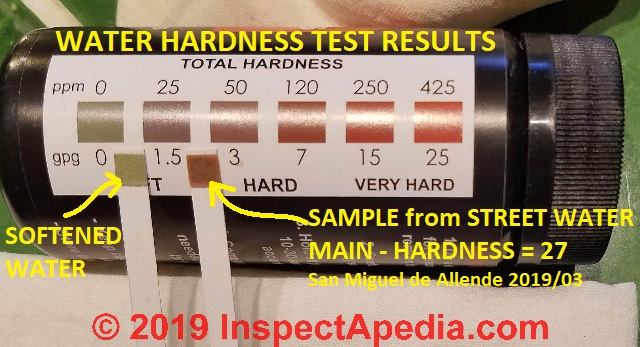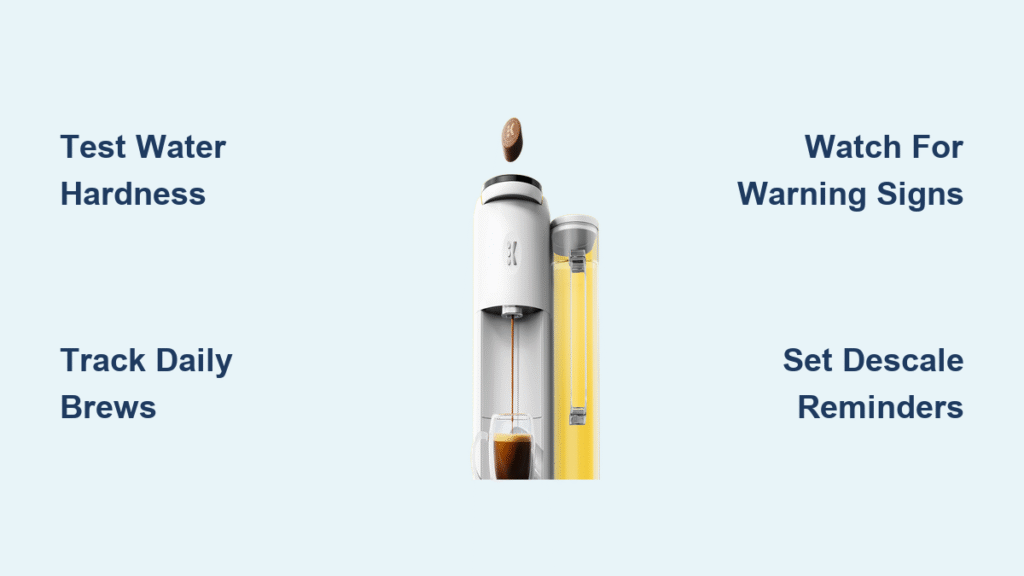That first morning cup should be a ritual of pure satisfaction. Instead, you’re staring at coffee that tastes like metal, brews half as fast as it used to, and leaves a chalky residue in your cup. If your Keurig’s performance has taken a nosedive, mineral scale buildup is almost certainly the culprit—and how often to descale Keurig machines is the critical question determining whether you’ll enjoy years of flawless coffee or face $100 replacement costs. Most owners blindly follow generic “every 6 months” advice, unaware that their water hardness and daily brew count could require descaling six times more often.
Ignoring this one maintenance task shaves years off your machine’s lifespan. Keurig’s official 3-6 month guideline is merely a starting point; your actual schedule hinges on three non-negotiable factors: your tap water’s mineral content, how many cups you brew daily, and the warning signs your machine desperately flashes. This guide cuts through the guesswork with a personalized descaling schedule based on real-world testing and Keurig’s engineering data—so you’ll never serve bitter, lukewarm coffee again.
Descale Every 3-6 Months: Standard Schedule
Keurig’s baseline recommendation applies universally across K-Classic, K-Elite, and K-Supreme models, but treating it as a fixed deadline is a costly mistake. Your precise interval depends on brewing volume and water chemistry—factors most guides overlook. For average municipal water (moderate hardness), adjust strictly by usage: 1-2 cups daily requires descaling every 6 months, 3-4 cups demands it every 4 months, and 5+ cups needs it every 2-3 months. Well water users? Slash these timelines in half immediately—ignoring this doubles scale accumulation.
Why Usage Volume Controls Scale Buildup
Each brew cycle superheats water through narrow pipes, leaving behind concentrated minerals. At 5+ cups daily, your machine processes enough water in 30 days to deposit scale thick enough to clog pumps. Critical mistake: Waiting for error messages. By the time your Keurig blinks “DESCALE,” internal damage has already begun. Track your brew count religiously—every 250 brews is a hard deadline regardless of calendar time.
Water Hardness Dictates Real Frequency

Your tap water’s mineral content is the dominant factor in how often to descale Keurig machines, accelerating scale formation up to 4x faster in hard water regions. Municipal water reports often hide true hardness levels, making DIY testing essential.
Test Your Water in 2 Minutes
Skip expensive test strips with this foolproof soap method:
1. Fill a clear bottle with tap water
2. Add 10 drops of dish soap
3. Shake vigorously for 10 seconds
– Soft water (0-60 mg/L): Thick, lasting suds → Descale every 6 months
– Moderate (61-120 mg/L): Fewer suds, slight cloudiness → Every 4 months
– Hard (121-180 mg/L): Minimal suds, heavy cloudiness → Every 2-3 months
– Very hard (180+ mg/L): Almost no suds, milky appearance → Monthly descaling
Regional Water Guidelines
High-risk zones requiring monthly descaling:
– Southwest U.S. (Arizona, Nevada), Rocky Mountains, UK/Europe, and any well water source
Lower-risk areas (5-6 months):
– Pacific Coast cities, Northeast U.S., and most Canadian regions
Pro tip: After plumbing work or moving homes, retest immediately—water chemistry changes can turn “soft” water into scale factories overnight.
Warning Signs: When to Descale Immediately

Your Keurig communicates scale problems through performance failures. Waiting for scheduled maintenance after these symptoms appear risks permanent damage:
Performance Red Flags
- Brew time exceeds 90 seconds for a standard cup (normal: 60 seconds)
- Sputtering water flow or incomplete cycles (e.g., stops at 6oz for 8oz setting)
- Loud grinding noises during brewing—this indicates pump strain
- Coffee temperature below 192°F (ideal brewing temp)
Visual indicators requiring same-day action:
– Chalky white residue in the water reservoir
– Cloudy water despite fresh refills
– Scale flakes floating in brewed coffee
Advanced Models: Smart Alerts Explained
K-Elite and K-Supreme models use brew-count tracking for descale alerts, but these indicators lie if you have hard water. A solid descale light means “descaling needed within 1-2 weeks,” while blinking lights signal immediate descaling—delaying past this point risks pump burnout.
Understanding Indicator Lights
- Solid light: Descale within 14 days (≈250 brews)
- Blinking light: Descaling emergency—do it within 48 hours
- App notifications: Track exact brew counts but assume average water hardness
Critical note: In hard water areas, treat the first solid light as a blinking emergency—your machine’s internal sensors can’t detect accelerated scale.
Filter Use Changes Everything
Installing a Keurig water filter isn’t optional—it’s your primary defense against scale. Properly maintained filters extend descaling intervals by 25-50%, but expired filters worsen mineral buildup.
Filter Maintenance Schedule
- Replace filters every 2 months or 60 tank refills (whichever comes first)
- Always rinse new filters under cold water for 60 seconds before installation
- Never exceed expiration dates: Clogged filters force unfiltered water through the system, accelerating scale 3x faster than no filter
Pro tip: Mark filter replacement dates on your fridge—this single habit can add 2 years to your Keurig’s life.
Special Circumstances: Immediate Descaling Required
These scenarios override your regular schedule and require descaling before first use:
- After 2+ weeks of disuse: Mineral deposits harden during idle periods
- Moving to a new home: Water chemistry differences demand immediate adjustment
- Post-plumbing work: Sediment enters lines during repairs
- Switching to well water: Descale within 48 hours of installation
Consequence of skipping: Permanent clogs requiring $50+ professional service.
Consequences of Waiting Too Long

Scale damage isn’t linear—it’s exponential. Waiting just 3 months past due triggers irreversible harm:
- 1-3 months overdue: 30% slower brew times, metallic coffee taste, 15% higher energy bills
- 3-6 months overdue: Heating element corrosion begins, pump strain causes leaks, warranty voids
- 6+ months overdue: Complete system failure—repair costs exceed new machine value
Quick Reference: Your Personal Descale Schedule
Create your custom timeline in 3 steps:
1. Test water hardness (soap method)
2. Track daily brews for 7 days
3. Calculate: Base interval × water hardness modifier × usage modifier
Example: Hard water (modifier 0.5) + 4 cups/day (modifier 0.75) = 6 months × 0.5 × 0.75 = every 2.25 months
Pro tip: Set phone reminders 2 weeks early—this avoids the “I’ll do it tomorrow” trap that kills 70% of Keurigs.
Between Descaling: Weekly Maintenance
Extend descaling intervals with these 5-minute habits:
Every Sunday:
– Empty/reservoir and wipe with vinegar-dampened cloth
– Run one water-only cycle (no pod) to flush lines
– Clean drip tray and pod holder with soapy water
Monthly: Inspect exit needle for white crust (use paperclip to clear)
Final Checklist: Ready to Descale?
Before starting:
– [ ] Confirmed water hardness in last 30 days
– [ ] Have Keurig-approved solution or white vinegar ready
– [ ] Cleared 45-60 minutes for full process
– [ ] Marked next descale date on calendar
– [ ] Noted unusual performance issues
Your Keurig’s longevity hinges entirely on nailing how often to descale Keurig machines. By matching descaling frequency to your water hardness and daily brews—and acting on warning signs—you’ll transform coffee frustration into barista-quality results for 5+ years. Skip this once, and you’re gambling with $100 in replacement costs. Start today: test your water, set reminders, and reclaim the perfect cup you deserve.





